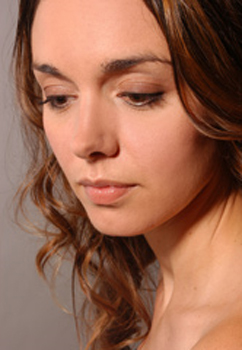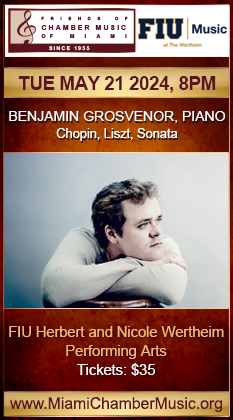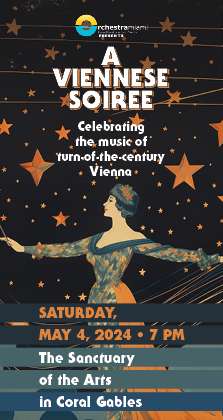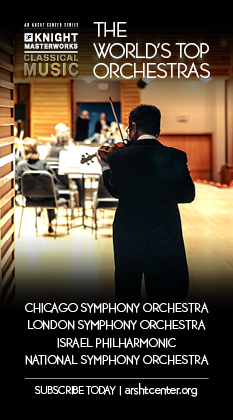Some intriguing nuggets in a personal evening of Thomas Sleeper’s music
The University of Miami’s Frost School of Music showcased the music of Thomas Sleeper on Sunday evening. Sleeper is a familiar presence on the Gusman Concert Hall stage, frequently leading the Frost Symphony Orchestra in performances that often exceed the collegiate level. This time he mostly provided brief commentary on his compositions, the music-making left in the hands of his performing colleagues.
Sleeper is a gifted, remarkably prolific composer, and his Violin Concerto, premiered last season, is a splendidly lyrical and virtuosic vehicle. The eight works on this program proved less consistent. Some of the piano pieces were too similar in mood and pulse. Still there were some interesting scores that hinted at Sleeper’s wide stylistic palette.
Two keyboard works were repeated from an earlier concert of Sleeper’s music. Four Quartets, based on writings of T.S. Eliot, is a series of brief vignettes, the piano writing traversing Bartok, Satie and Boulez in alternately witty and impressionistic strophes. “Gretchen,” the second movement of Sleeper’s Piano Concerto, is replete with inner turmoil, rising to an emotional climax. Scored for the striking combination of piano and pitched percussion, this performance substituted electronics for a live percussion battery.
Parallages is a set of variations on a rather bleak, austere theme. At times recalling Lutoslawski’s Paganini Variations for two pianos, glints of Bachian counterpoint and Schoenberg serialism run through the keyboard writing. Despite considerable invention, the score seems random and incoherent at first hearing. Menagerie is a brief three-movement suite of bird portraits. Similar to the terse piano miniatures of Bartok and Ligeti, the tinkles and rhythmic outbursts lack the striking originality of those masters.
Silver Mirror Suite is based on a film score, a series of lovely mood paintings tinted with hues of bright color. A haunting melody rises at the work’s conclusion in true cinematic fashion. Leylie’s Dance, dedicated to Sleeper’s daughter, is a twenty-first century version of Satie’s Gymnopedie, the singing melodic lines beautifully crafted.
Zoe Zeniodi, a former Sleeper pupil at UM Frost and now an assistant conductor at Florida Grand Opera, was the fearless, musically sensitive piano soloist. Whether playing at lightning speed or softly creating impressionistic effects, Zeniodi was a stalwart advocate for Sleeper’s often difficult keyboard writing.
Re: Joyce, Opus B, a showpiece for bass trombone, is based on James Joyce’s Finnegan’s Wake, even including a drinking song from the novel in a central episode. The electronics that substituted for the orchestral part did not really do justice to the churning instrumental timbres. Still, you had to love the growls, muted wails and crackling roars Jose Leonardo Leon drew from the instrument, devilishly conceived by Sleeper. With a capital soloist like Leon and a full orchestra, this work could be a real crowd pleaser.
Frank Capoferri was the brilliant soloist in Sleeper’s unaccompanied Suite for Baritone Saxophone. Producing deep tones from his instrument, Capoferri spun the elongated recitative of the Doloroso espressivo and the long-breathed melody of the Arioso masterfully. Playing at rapid pace, Capoferri breezed through the jazzy, big-band strophes of Ritmo perpetuo. That final movement suggests Sleeper may yet create a major jazz score.
Daughter and Dad, a brief pastoral interlude by Sleeper’s 6-year-old daughter Leyla Michelle, suggested another generation of creative artists may be on the way. With Leyla playing a small harp, her beaming father assayed the flute part.
Posted in Performances
Leave a Comment
Mon Mar 25, 2013
at 11:47 am
No Comments




